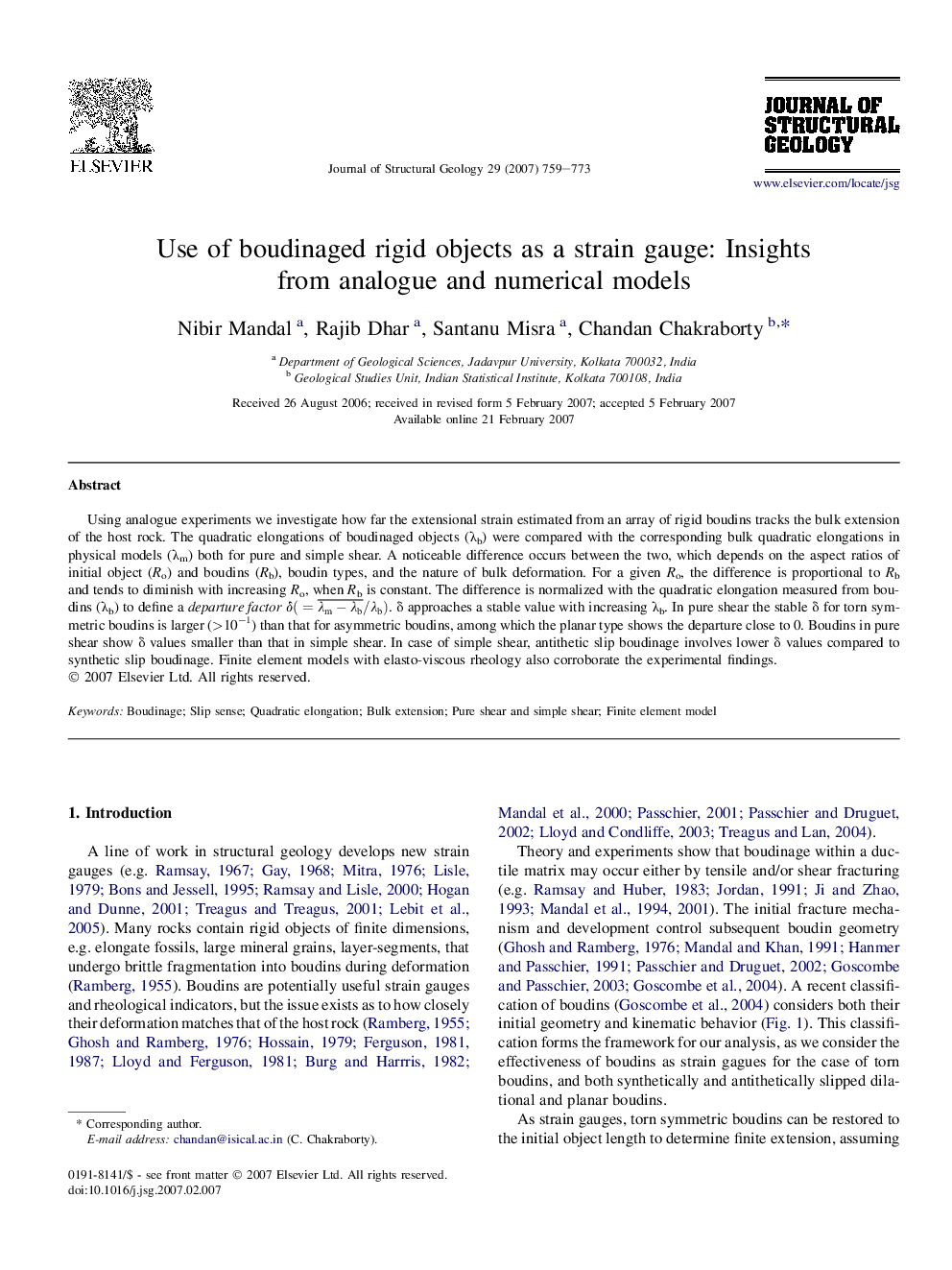| Article ID | Journal | Published Year | Pages | File Type |
|---|---|---|---|---|
| 4733953 | Journal of Structural Geology | 2007 | 15 Pages |
Using analogue experiments we investigate how far the extensional strain estimated from an array of rigid boudins tracks the bulk extension of the host rock. The quadratic elongations of boudinaged objects (λb) were compared with the corresponding bulk quadratic elongations in physical models (λm) both for pure and simple shear. A noticeable difference occurs between the two, which depends on the aspect ratios of initial object (Ro) and boudins (Rb), boudin types, and the nature of bulk deformation. For a given Ro, the difference is proportional to Rb and tends to diminish with increasing Ro, when Rb is constant. The difference is normalized with the quadratic elongation measured from boudins (λb) to define a departure factor δ(=λm−λb¯/λb). δ approaches a stable value with increasing λb. In pure shear the stable δ for torn symmetric boudins is larger (>10−1) than that for asymmetric boudins, among which the planar type shows the departure close to 0. Boudins in pure shear show δ values smaller than that in simple shear. In case of simple shear, antithetic slip boudinage involves lower δ values compared to synthetic slip boudinage. Finite element models with elasto-viscous rheology also corroborate the experimental findings.
